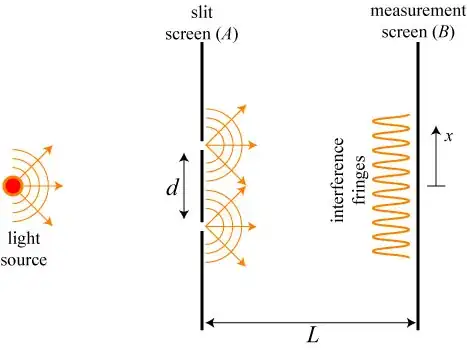In Young's double slits experiment, there are points on the screen where the probability of an impact is null. I drill a hole at such a point and place a second screen E2 behind E1. I guess that there will be no impact on the second screen. Wheeler said that looking to one of the slit will reveal particle properties. To look in the direction of one slit I take a long thin tube between E1 and E2. One of its ends is at the hole and the other one on E2. Will there be impacts on E2 through this tube?
I am not sure of my answer to this problem: before piercing the screen at point p where there is a dark fringe, all the paths that arrive there stop with annihilation of the photon. There are mainly two categories of paths that play an important role, these are those who join each of the slots at p in as approximate straight line. the others contribute very little to the resulting amplitude. and each of the two groups provide a phase 1 and 2 which vanishes at p. let's go directly to the case with a tube behind the hole pointing towards one of the slots. we still have the group of paths from the target slot that now extend into the tube with an increasing phase. the other group must deviate from the straight line to get into the tube; They will not contribute coherently to the final result of the detection at the bottom of the tube. this group will not be able to provide a phase opposite to the identical one provided by each of the paths in a straight line. So we will have a possible detection on E2 at the bottom of the tube. There is another argument remove the screens and just keep the telescope pointing to one of the sources. no photon from the other sourc will cross it. and some from the observed source will do it. so we have an device that gives partial wich path information and therefore the probability can no longer be zero at p as we supposed.

